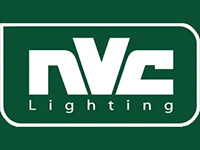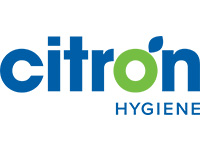Keeping Fans Safe In The Zone
 Deborah Ainscough, founder and director of event safety and crowd management specialist, Crowdguard, discusses the growing popularity of fan zones in stadium grounds and the need to consider safety and security for these temporary facilities.
Deborah Ainscough, founder and director of event safety and crowd management specialist, Crowdguard, discusses the growing popularity of fan zones in stadium grounds and the need to consider safety and security for these temporary facilities.
The FIFA World Cup is about to kick off as I write this article, and, with matches happening so far away, and in a location with limited accommodation for visiting fans, it seems things will happen a little differently this time around.
With no fixtures happening at home while so many star players are away as part of their national squad, some clubs have taken the opportunity to bring fans together in fan zones; a concept that is proving increasingly popular for major tournaments, landmark friendlies and league matches alike. Fan zones provide an opportunity to generate revenue and bring the fan community together.
Whether a fan zone is there to enable fans to enjoy a shared match experience for far away fixtures, as it will be during the World Cup, or as a place for fans to congregate before and after a home game, security risks need to be addressed as part of the planning process to provide a safe and welcoming environment for fans before, during and after the match.
Extending The Duty Of Care Beyond The Stadium
While most club owners and stadium operators already have robust security measures and risk assessment protocols in place for their actual stadium, managing the crowds outside of the stadium but still within the grounds can be more challenging. Fan zones are often located in these areas within the perimeter of the stadium’s grounds, but outside the protection of the stadium. During fan zone opening hours, pedestrians need to be able to access the area easily, while vehicular access must be prevented and fans – potentially thousands of them – need to be protected from errant vehicles and vehicle as a weapon attacks.
Specification & Risk
To create a pedestrian-permeable perimeter that enables fans to flow in and out of the fan zone while protecting them from errant vehicles and vehicle as a weapon attacks, an IWA-14-1 certified HVM (hostile vehicle mitigation) system is usually required. The correct specification and configuration of HVM will depend on the level of risk for a specific site, and a threats vulnerabilities and risk assessment (TVRA) will consider all elements of risk so that the HVM provider can recommend a best-fit solution. This should take into account factors including the layout and topography of the site, the anticipated number of visitors and required flow rates, and vehicle dynamics, such as required stopping distances for vehicles of different sizes travelling at different speeds. Specifying the correct HVM system or combination of systems should always be aligned to risk, with any variation from the ‘as tested’ configuration of the HVM system, or additional risk factors due to value engineering, clearly explained in writing by the provider.
Ease And Speed Of Deployment
For temporary event spaces like fan zones, a surface-mounted HVM system is usually the preferred option because this can be installed and removed quickly and easily with no damage to the road surface and without the disruption of civil engineering works. The time it takes to install an HVM system varies depending on the amount of protection required and the system used, but it can be as fast as five minutes for a single array of a system designed for rapid installation, or a day (or overnight) programme for a more complex and larger HVM installs.
Regardless of which system is used, it is essential that the HVM solution is installed in line with the specification by trained technicians to quality assured and clearly documented processes. This includes a photographic record of the project. Installation should always be an integral part of the specification and supply contract because HVM performance relies on correct deployment. It is akin to packing a parachute – you would want an expert to pack it to feel assured it would keep you safe and the same principles applying to keeping fans safe at the stadium.
Temporary Vehicular Access
Although the purpose of an HVM system is to prevent vehicles from accessing the location, consideration needs to be given to whether there will need to be vehicular access to the fan zone area at any point. This could include a requirement to allow delivery vehicles, the potential for emergency vehicles to be called to site, or even for normal access to car park areas on non-match days. Vehicle access plates can be included in the installation of some HVM systems to enable vehicles to move freely in the area for maintenance and delivery at times when the fan zone is not in use, or to allow rapid access should blue light services be required. Building this type of flexibility into stadium safety and security enables the installation to remain in place for the entire football season, while adapting to different safety and operational requirements.
Customisation & Aesthetics
Alongside their safety and security function, HVM systems at fan zones also provide an opportunity to enhance the environment with branding, signage, wayfinding or advertising. A key consideration for fan zone security is not just how much the physical measures in place improve safety, but how much they make people feel safer, so there is a balance to be struck between selecting a solution that visibly provides protection and one that maintains a welcoming aesthetic. Fan zones exist to celebrate the power of sport to bring people together, and HVM systems can embrace that principle through customisation. Options include club or tournament branding, information, wayfinding or ads – or a combination of these.
Fencing And Turnstiles
If access to the fan zone is ticketed, crowd management for ticket checks must also be factored into the planning and safety provision. Temporary fencing or hoarding can also be used to segregate the fan zone area from other locations within the stadium’s grounds too. Again, it is important to consider any requirements for vehicular access and controlled pedestrian access so that appropriate vehicle access gates, pedestrian gates or pedestrian turnstiles can be incorporated into the installation.
Quality-assured deployment by experienced technicians is equally important when temporary fencing or hoarding is installed for fan zones, ensuring that temporary systems are correctly configured, secured and ballasted to provide the protection of a permanent fixture with a temporary installation.
Protecting The Stadium’s Greatest Asset
Vehicle as a weapon attacks are now the most prevalent terrorist tactic, with the potential to cause mass casualties very quickly. HVM protection has an important role to play in protecting the stadium’s most important assets – the fans.
Click the article to enlarge it.




















































